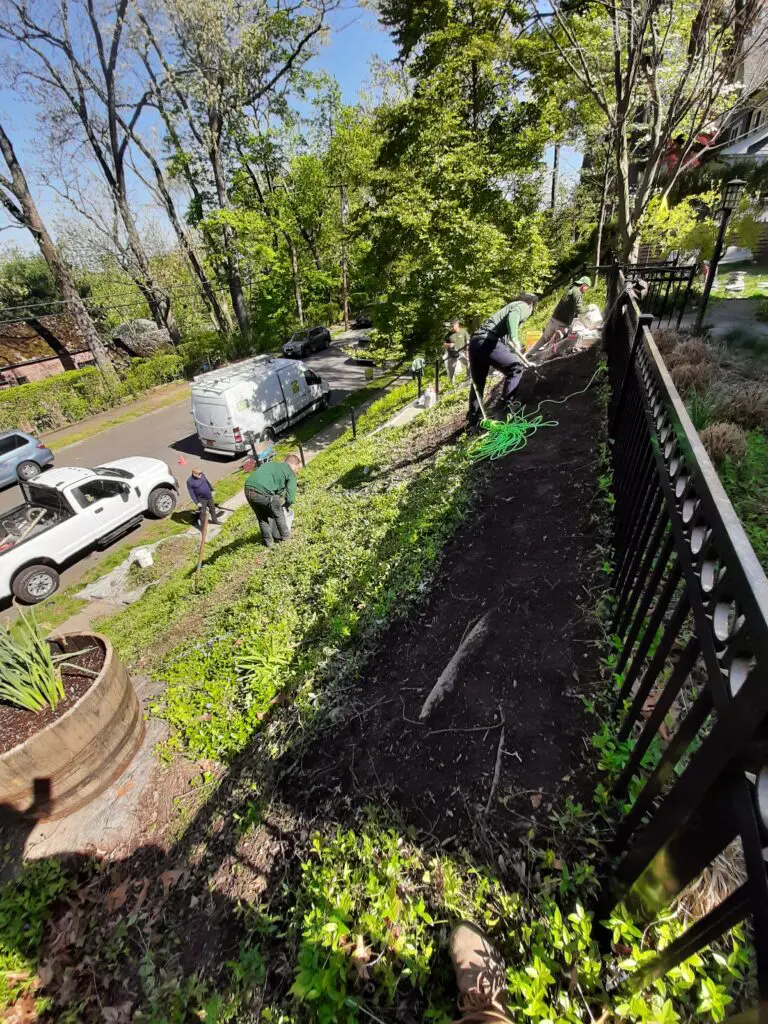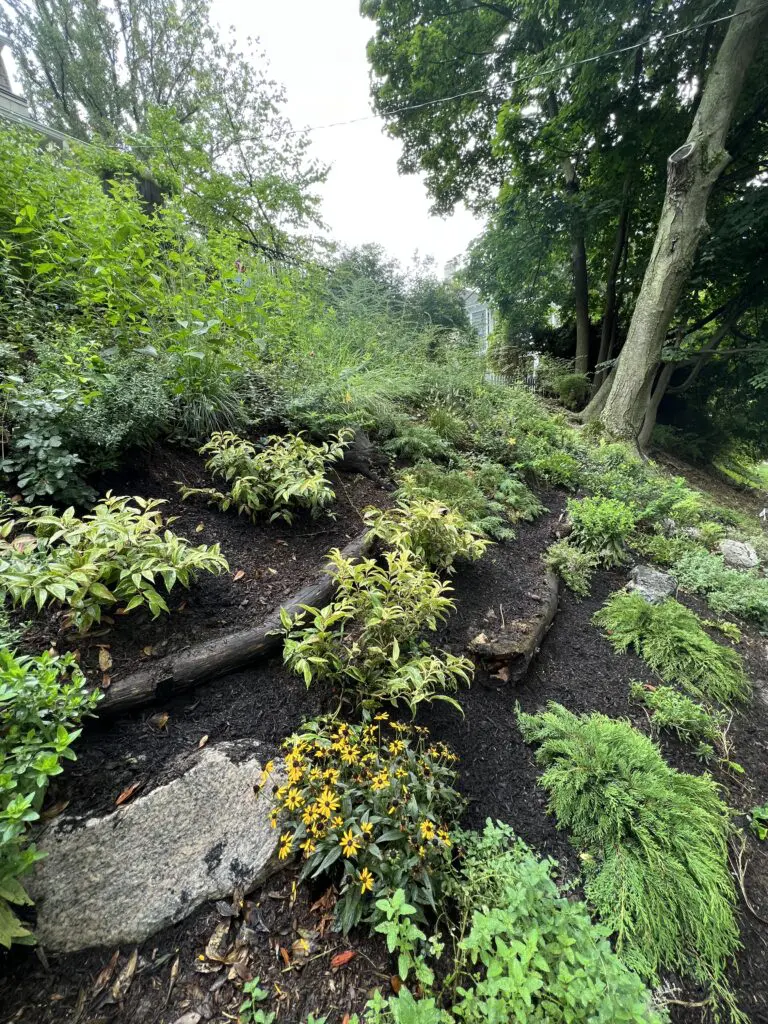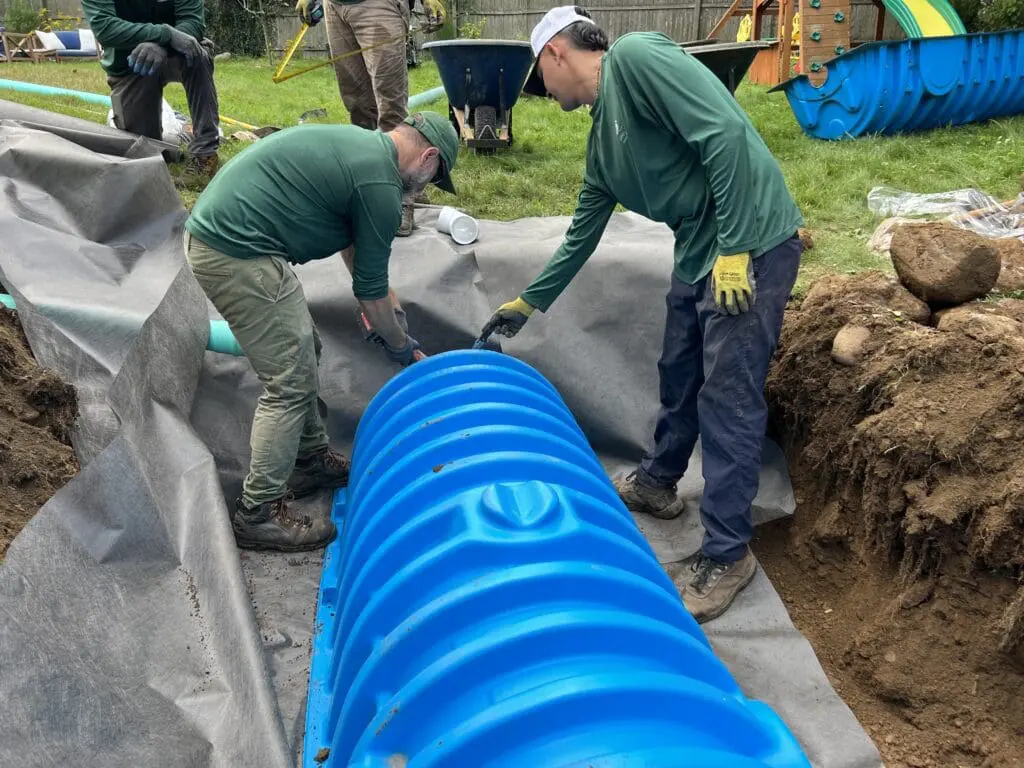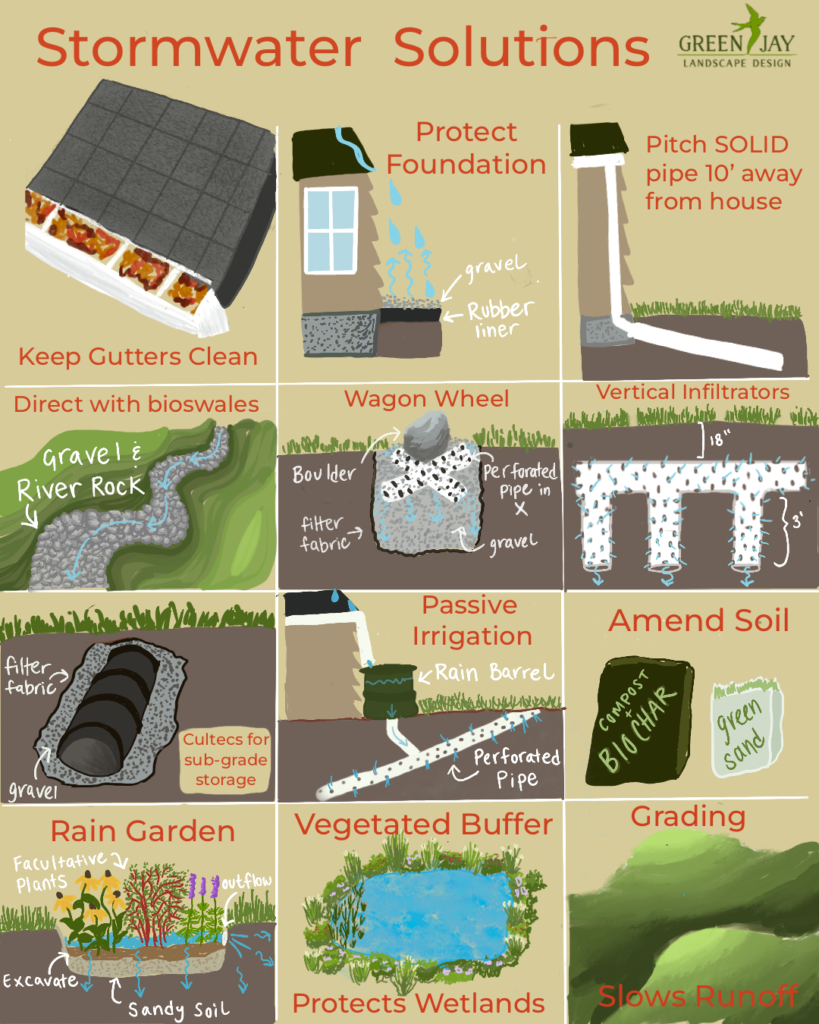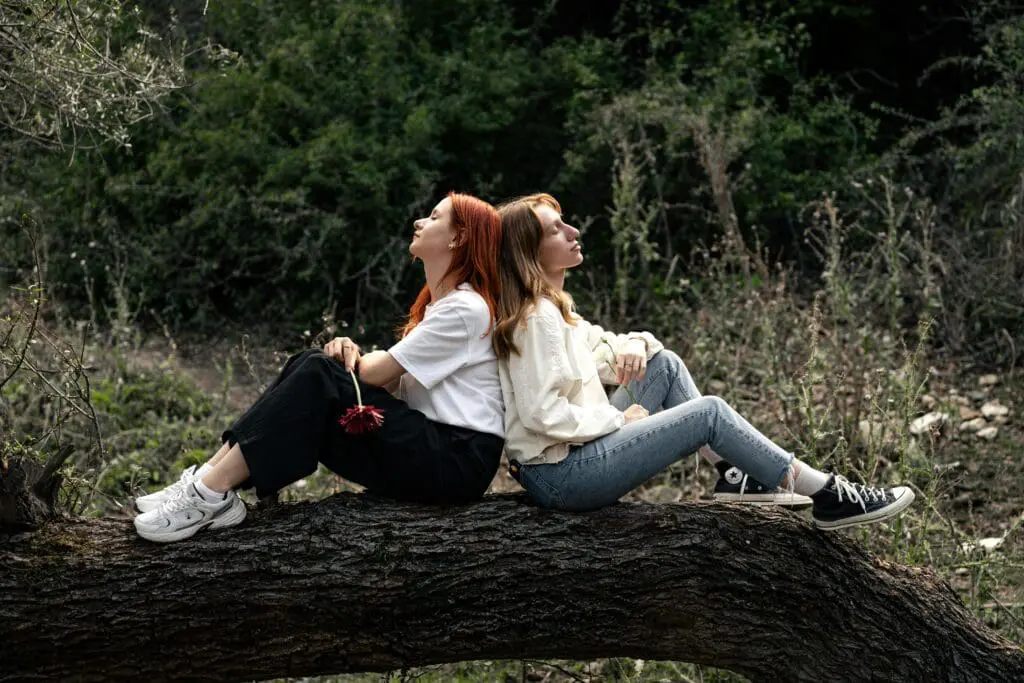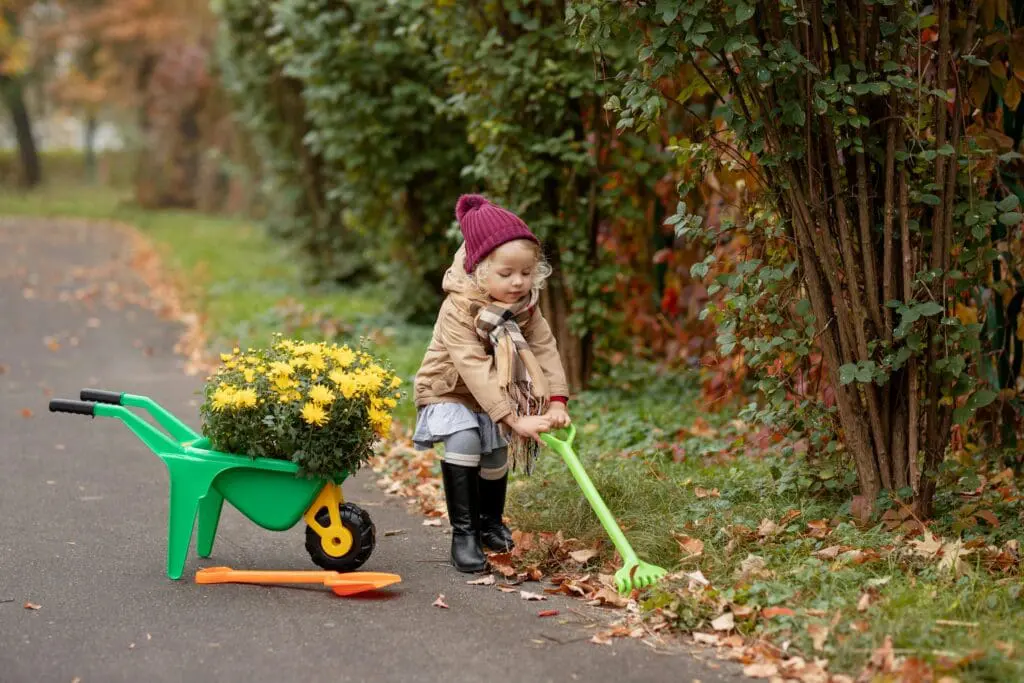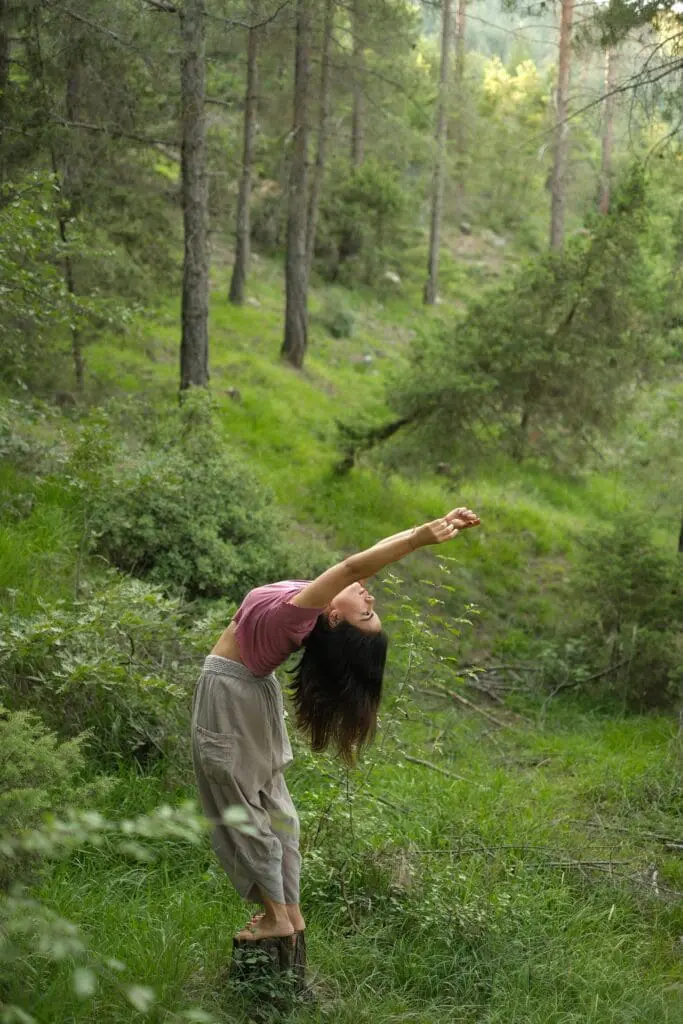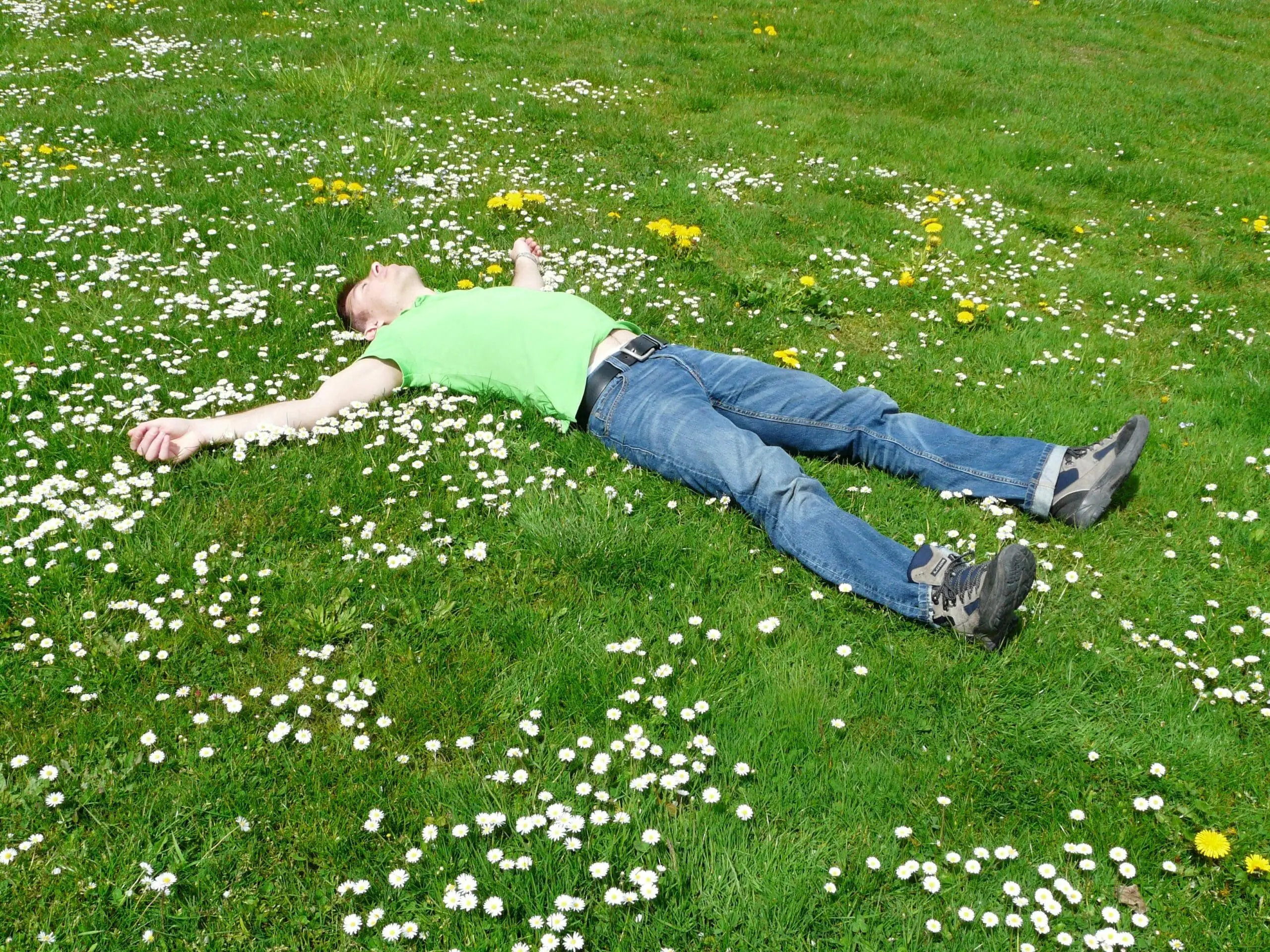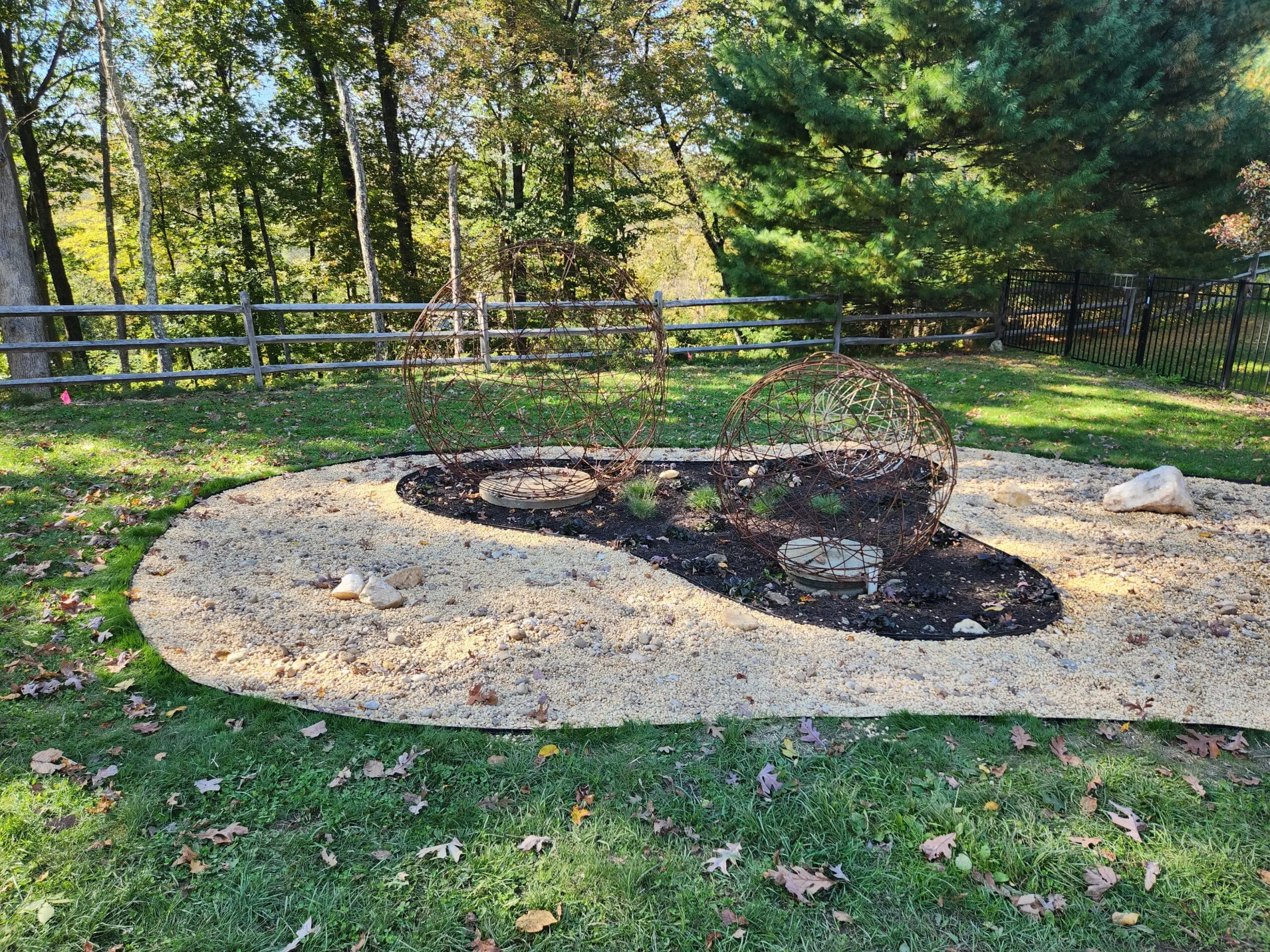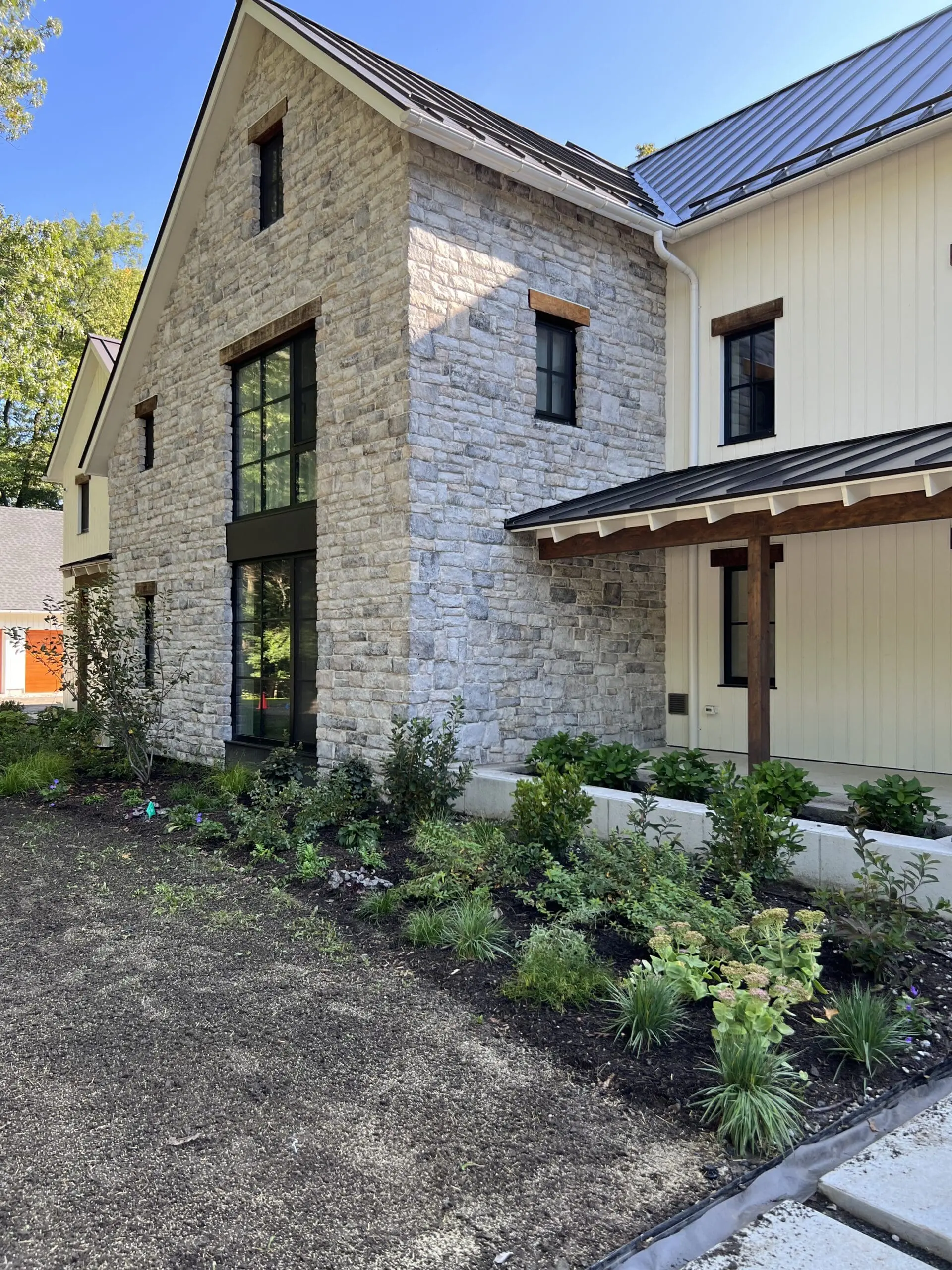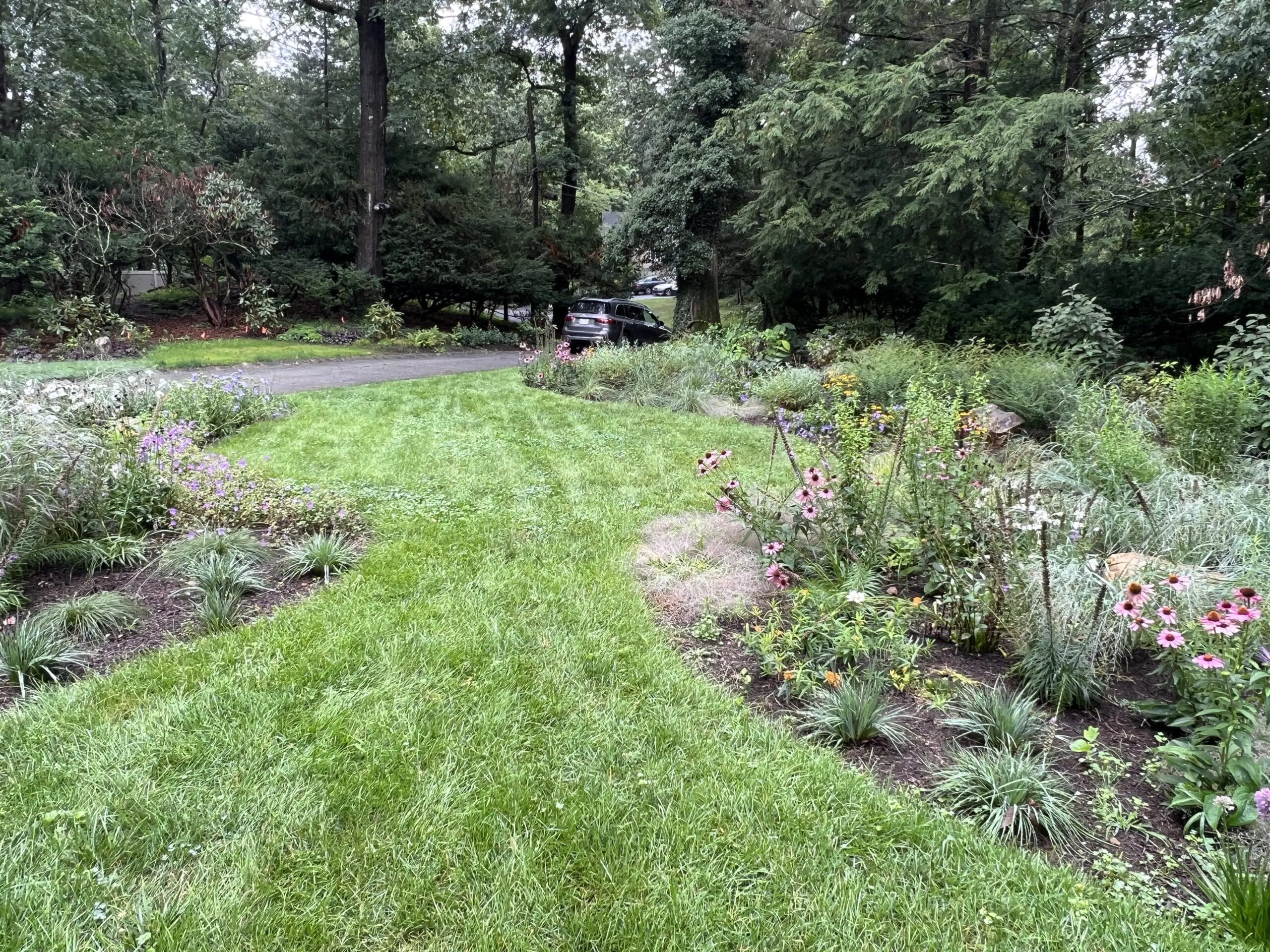The so-called river towns of Westchester County have an immense amount of charm—views of the Hudson! – as well as their challenges: steep topography coursing through small lots. This natural topography often creates very steep yards with little level space outside the footprint of the home. For these clients in Dobbs Ferry, New York, expanding their functional backyard space to accommodate their growing family was a high priority. The backyard’s old masonry was not standing the test of time and required repairs and reconstruction to make it child-safe again. The clients hired us for a Landscape Design Master Plan for the whole property and decided to start with the backyard as Phase One for installation. Below we detail the design and installation process for this complex, steep slope landscaping project.


Assessing the Site, Designing to Improve Function
The backyard of this property is about half slope and encircled on most sides by mature trees, making it a shady site. Overgrown Burning Bush and Andromeda around the patio isolated the space from the rest of the yard. A narrow and crumbling set of stone steps led up the hillside to a deer trail. The landscaping was effectively shrinking the yard instead of complimenting and enhancing it.
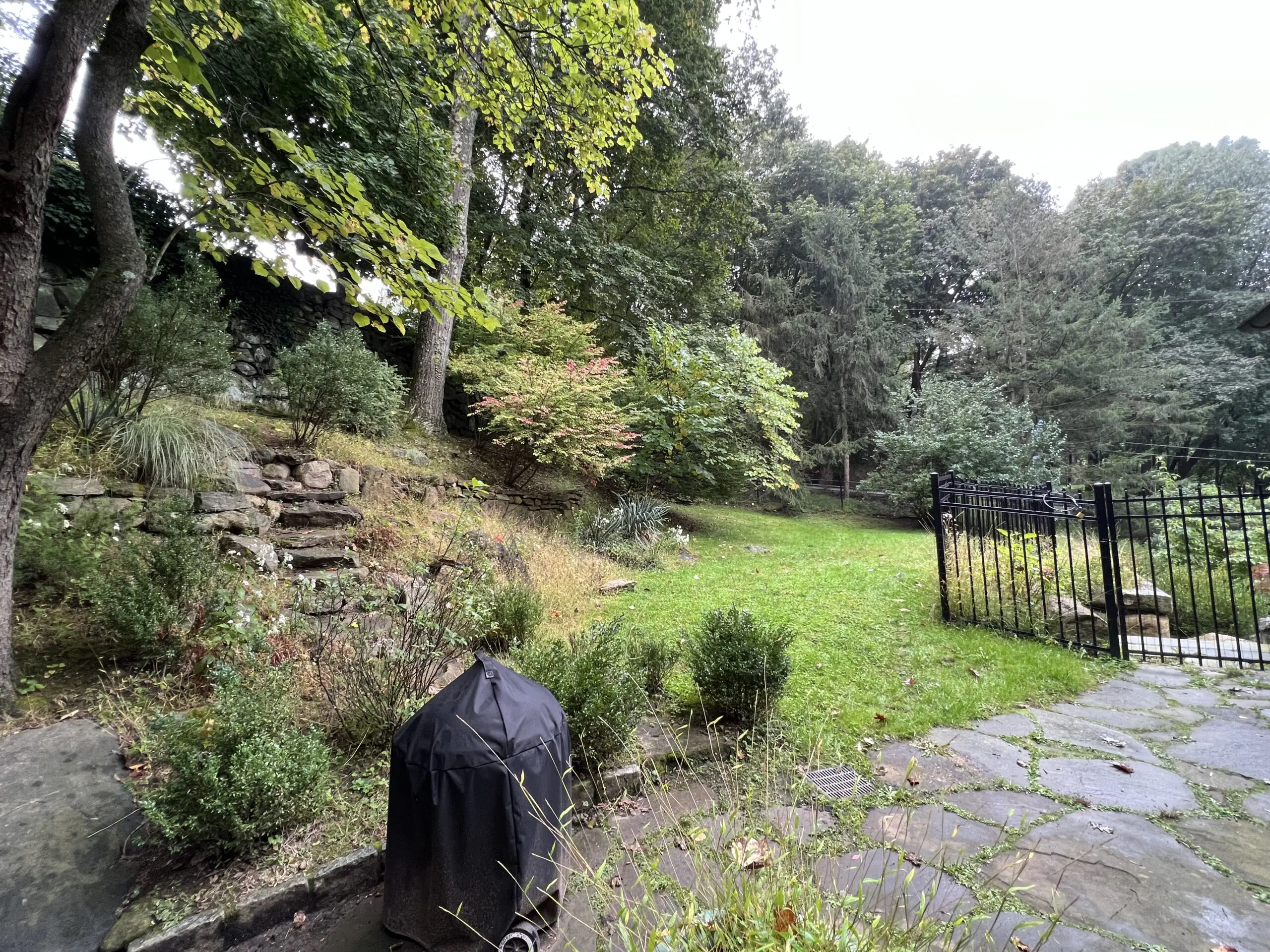
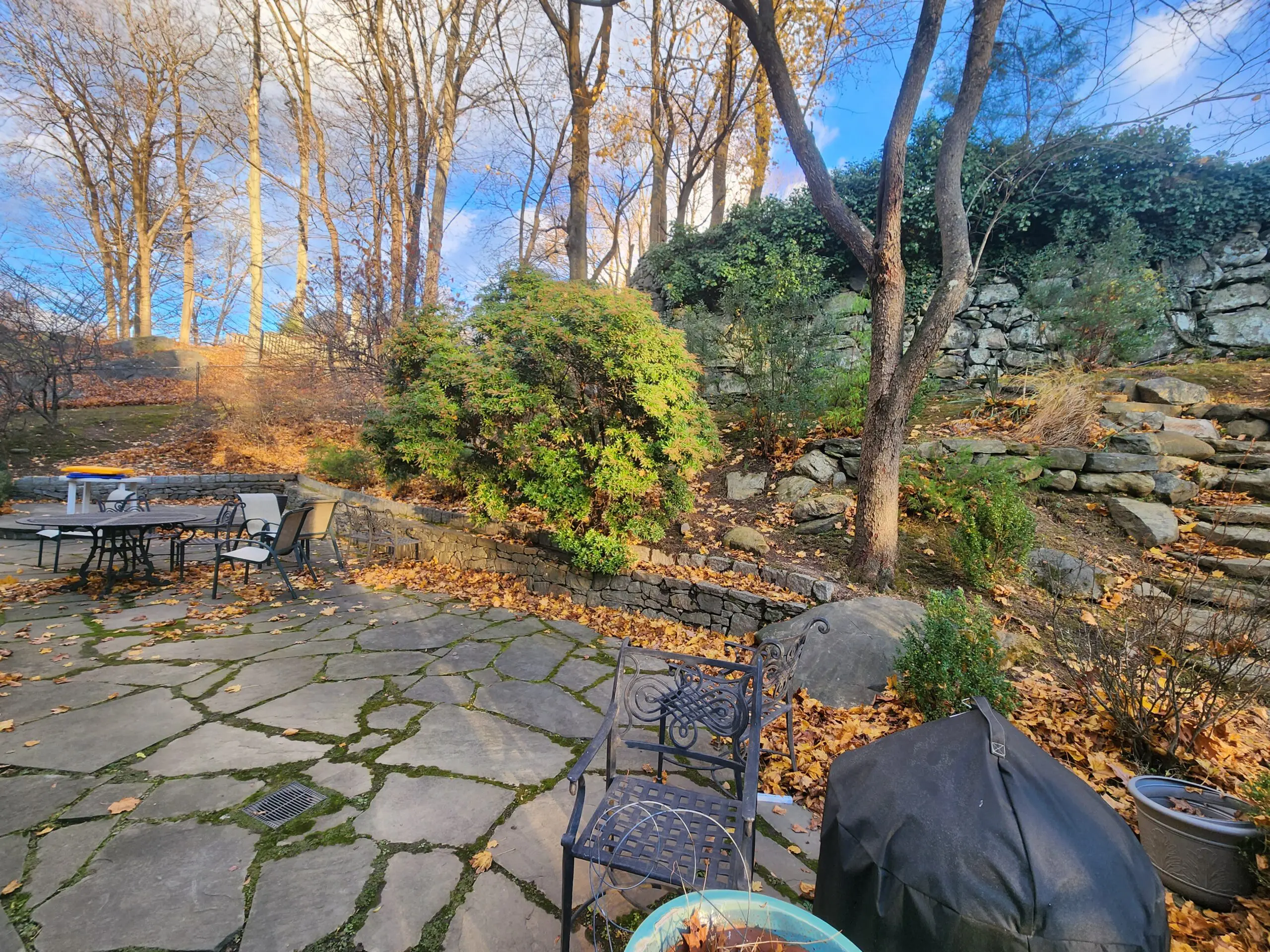

We knew we had to reclaim the slope and make it a feature of the yard again. To do so, we designed a larger and more gradual fieldstone staircase to navigate the slope, culminating at a woodchip trail that runs the length of the backyard. Nature trails are one of our favorite ways to create a kid-friendly landscape. They encourage exploration, movement and have a sense of mystery and adventure.

Grading the slope with significant amounts of topsoil would soften the grade and restore a planting depth of soil that had been lost after years of erosion. We designed a native woodland planting for the slope, featuring native flowering or evergreen shrubs, ferns, sedges, and wildflowers.

A hedge of native switchgrass conceals the iron fence dividing the front and backyard and blueberry shrubs are incorporated as a native, edible element for the outdoor classroom. We even helped the client select the perfect native tree to plant to commemorate their son’s birth: a flowering dogwood.
Staging Materials & Project Management
Another challenge to this property is accessing the backyard. From the driveway, materials would need to be hauled up a significant staircase and through a gate to reach the backyard. Instead, we opted to temporarily remove part of the chain link fence enclosing the backyard to give us direct access from the road, a much more efficient staging area. Since the client has dogs, we made sure to secure the fence again at the end of each workday.
Hardscape: Fieldstone Staircase & Woodchip Path Construction

The first stage of this landscape installation was constructing the fieldstone staircase. We rented an articulator, a machine with extended range for the arm, to drop the large fieldstone steppers into place on the hillside, once the base was created. The base for each step is Item 4 and stone dust, a “rammed Earth” construction method that avoids using cement.



The woodchip path has a filter fabric base and several inches of Certified Playground Mulch on top. We used fieldstone and cedar logs to line the path. At the far ends of the property, the woodchip path navigates the slope with cedar water bars acting as steps and erosion control.

Erosion Control Devices to Stabilize a Slope

We installed two types of erosion control devices to help stabilize the slope and enable further grading: compostable erosion socks and boulders. The erosion socks are fabric tubes filled with woodchips that are staked into place along the hillside to create a physical barrier to interrupt stormwater and hold soil in place. They biodegrade over time.
Boulders do not biodegrade but are a constant physical barrier as well as an attractive garden accent.
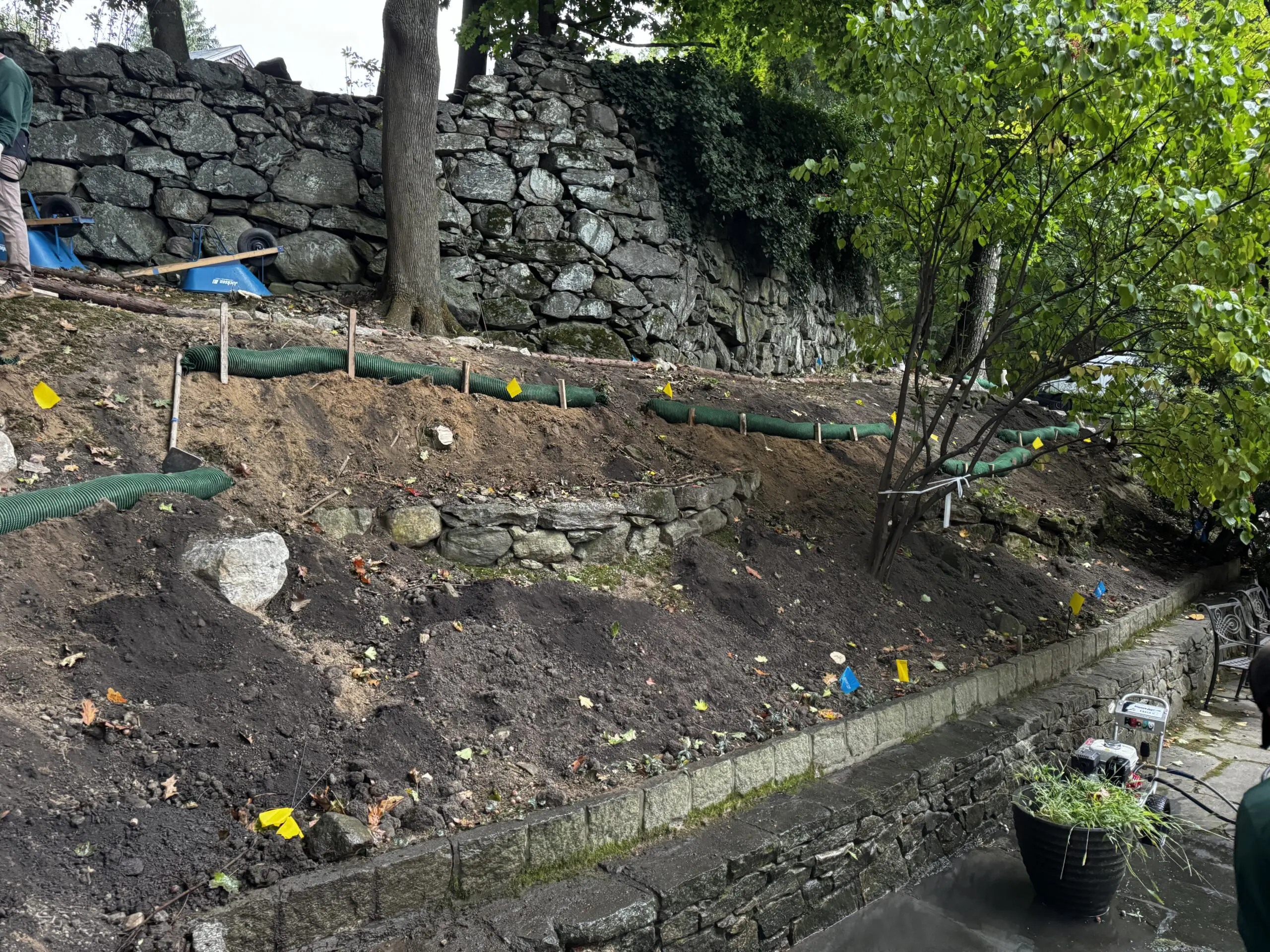
With the slope secured, we were able to add many yards of topsoil to the backyard, using a skid steer machine to move the soil while we finessed the new grade by hand.



Restoring an Existing Patio

The clients existing patio did not have a proper base, and as a result the stones were shifting and no longer level. To restore the patio we took a three pronged approach: first we power washed the patio to remove the mold and grime. Next, we lifted every piece off stone so that we could create the proper base. Finally, we repointed the joints with stone dust to create a level surface.

Phase Two & Slope Landscape Progress
Stay tuned for more photos as this landscape matures! We can’t wait to see how this new landscape thrives. In spring of 2025 we will be completing the front yard as part of phase two. Follow us on socials to follow along! @greenjaylandscapedesign
To start your ecological landscape design or steep slope project, contact us today!











